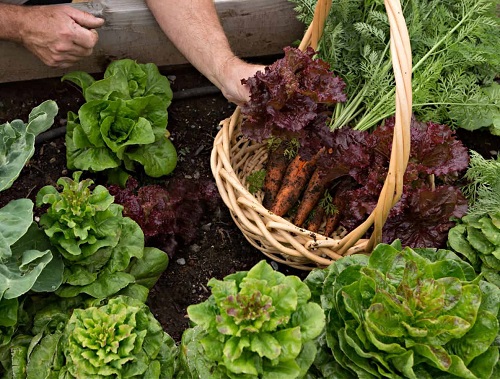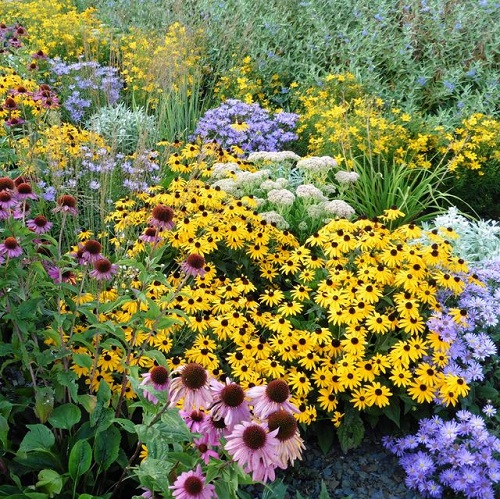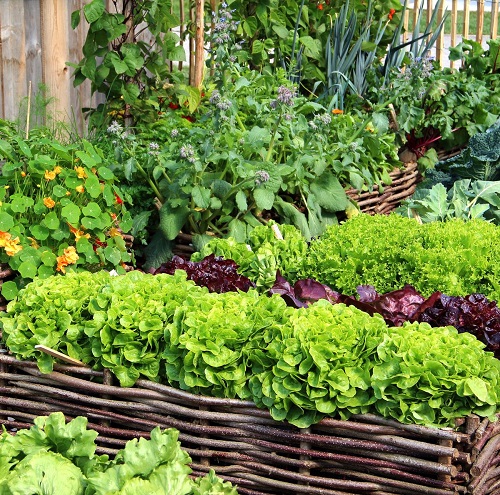Here are the best Types of Plants You Must Grow in September Garden! From flowers to vegetables, this list has them all!
September marks a transitional period in the garden, where the last days of summer meet the promise of fall. It’s an ideal time to plan and plant for a bountiful and colorful season ahead. In this expert article, we’ll explore the five most important Plants You Must Grow in September Garden, backed by proper research and expert advice.
Check out the best September birth month flowers here
Types of Plants You Must Grow in September Garden
1. Cool-Season Vegetables
What to plant: Cool-season vegetables like lettuce, spinach, kale, and radishes thrive in the mild temperatures of early fall.
Why it’s important: Planting these vegetables in September ensures a steady supply of fresh, homegrown produce as the weather cools down. These crops are also excellent for rotation, helping to improve soil structure and nutrient levels for the next growing season.
Best Vegetables to Grow in 5 Gallon Buckets & 12 Inches Pots
Tip: Consult your local agricultural extension office or gardening resources to determine the best varieties for your region and the expected first frost date.
2. Spring Flowering Bulbs
What to plant: Spring-blooming bulbs such as tulips, daffodils, and crocuses – all these are vibrant blooms you just can’t miss!
Why it’s important: Cooler temperatures are less stressful for bulbs, making it easier for them to establish roots without the risk of drying out. Planting in September gives bulbs more time to establish a strong root system before the ground freezes, preparing them for vigorous spring growth.
Tip: Choose bulbs that are firm and disease-free, and plant them at the recommended depth for your specific bulb type.
3. Perennial Flowers
What to plant: Perennial flowers like asters, mums, and sedums. They not only add a burst of colors in the garden, but you can also give them as cut flowers to your loved ones!
Why it’s important: Planting perennials in early fall gives them ample time to establish strong root systems before winter, ensuring robust growth and blooms next year. All three of these plants are perennials, meaning they’ll return year after year, increasing your garden’s long-term value.
Tip: Select perennials that are well-suited to your climate and soil conditions, and provide proper spacing and mulching for winter protection.
Perennial Flowers That Bloom From Spring to Fall Continuously
4. Cover Crops
What to plant: Cover crops such as clover, rye, or winter wheat.
Why it’s important: Cover crops help improve soil fertility, prevent erosion, and suppress weeds during fall and winter. These plants also contribute to soil structure by adding organic matter, improving water retention and soil aeration. Rotating cover crops breaks the life cycle of soil-borne pests and diseases, too.
Tip: Choose a cover crop that suits your garden’s needs and plan to incorporate it into the soil in early spring for maximum benefit.
5. Herbs
What to plant: Herbs like parsley, chives, and cilantro – they can be a delicious addition to so many dishes in your kitchen, and harvesting them fresh would be a wonderful experience!
Why it’s important: Sowing herbs in September allows you to enjoy fresh culinary flavors well into the cooler months. The strong aroma of these herbs can deter garden pests, reducing the need for chemical insecticides. The vibrant green leaves of parsley, chives, and cilantro add a touch of beauty to your fall garden.
Best Yellow Flowering Herbs
Tip: Ensure your herbs receive adequate sunlight, and consider container gardening if you have limited garden space or want to bring them indoors when frost threatens.
Conclusion
Planting in September is a strategic move that sets the stage for a thriving garden in the coming months and even into the next year. By sowing cool-season vegetables, spring-blooming bulbs, perennial flowers, cover crops, and herbs, you’re not only enhancing your garden’s productivity and beauty but also preparing it for the changing seasons.
Research and planning tailored to your specific climate and soil conditions will ensure a successful September planting, providing you with a vibrant and rewarding garden experience.







